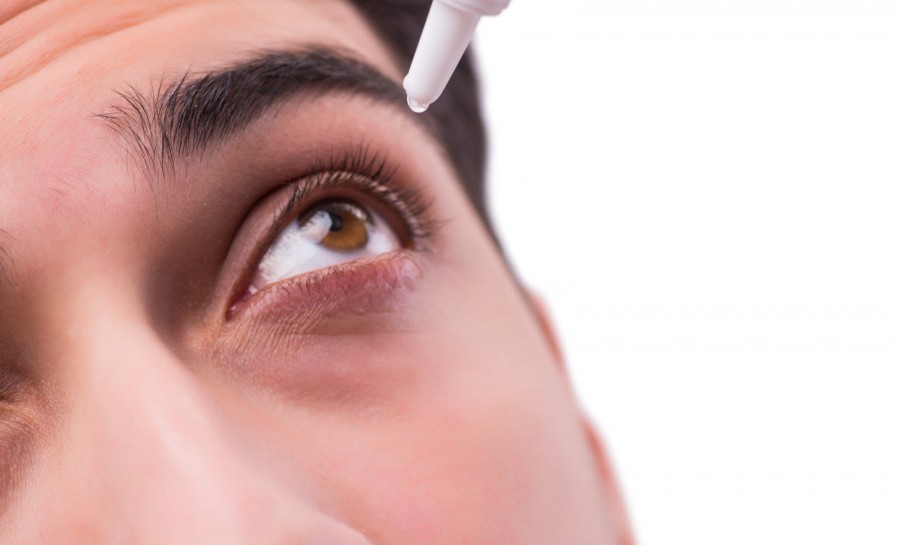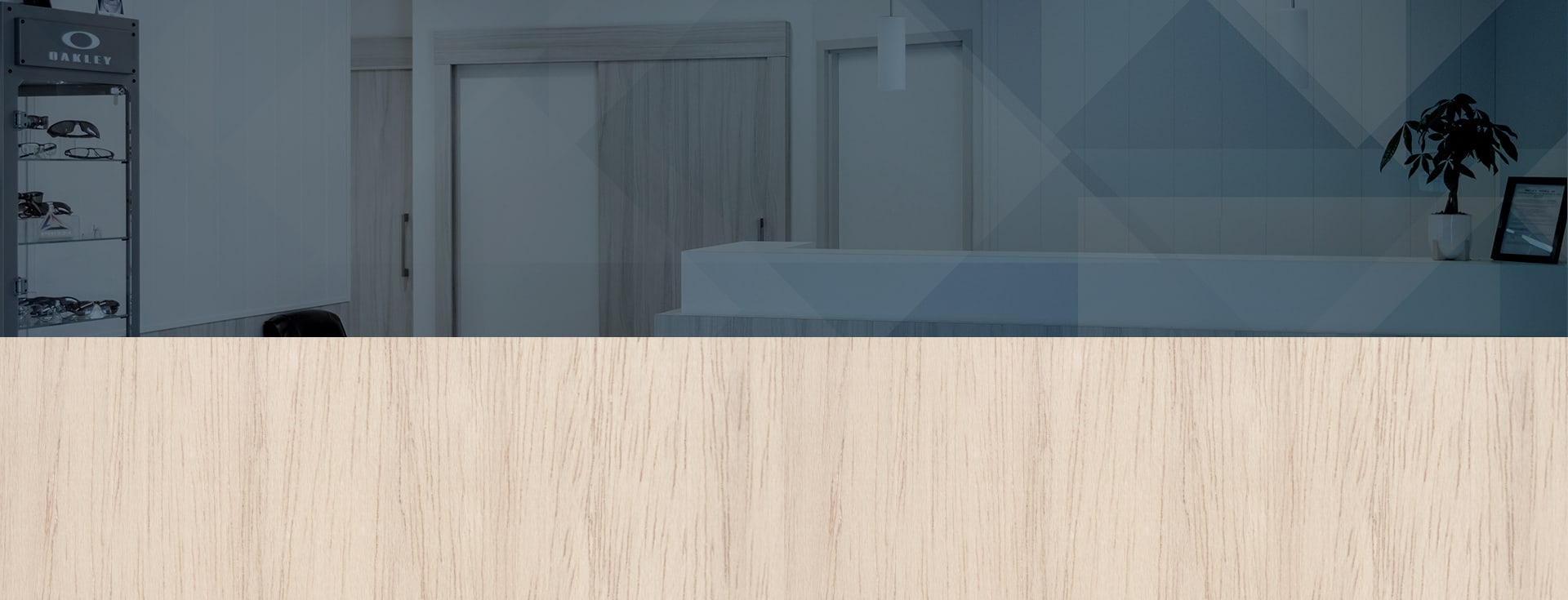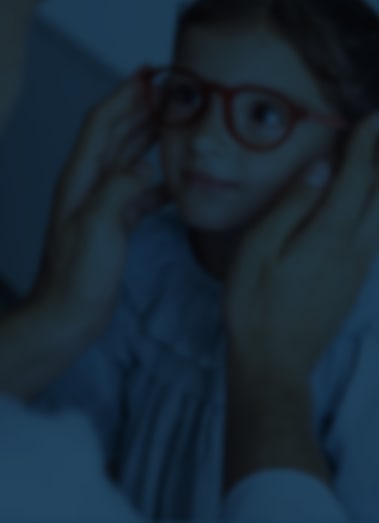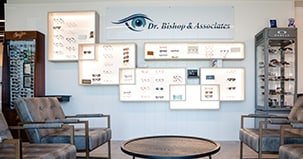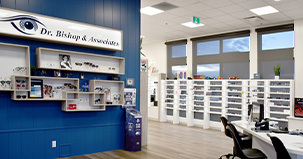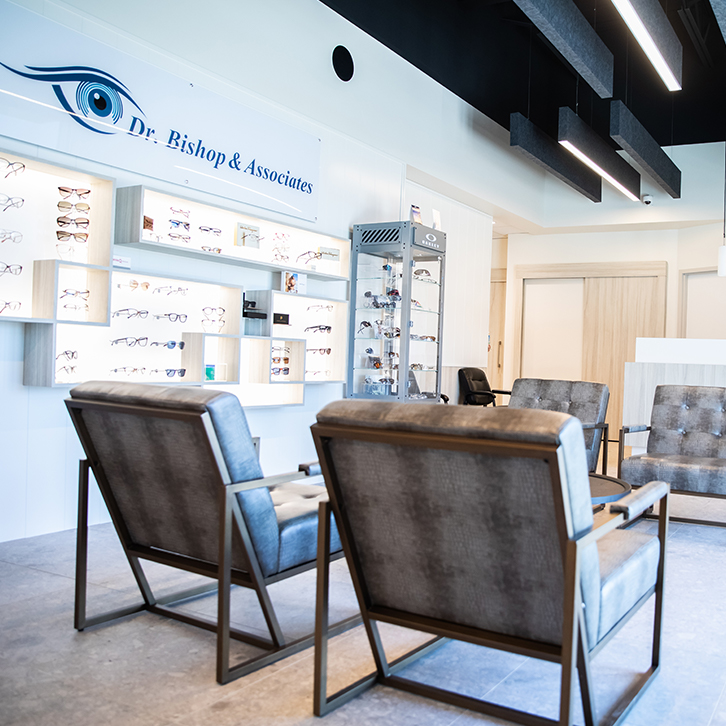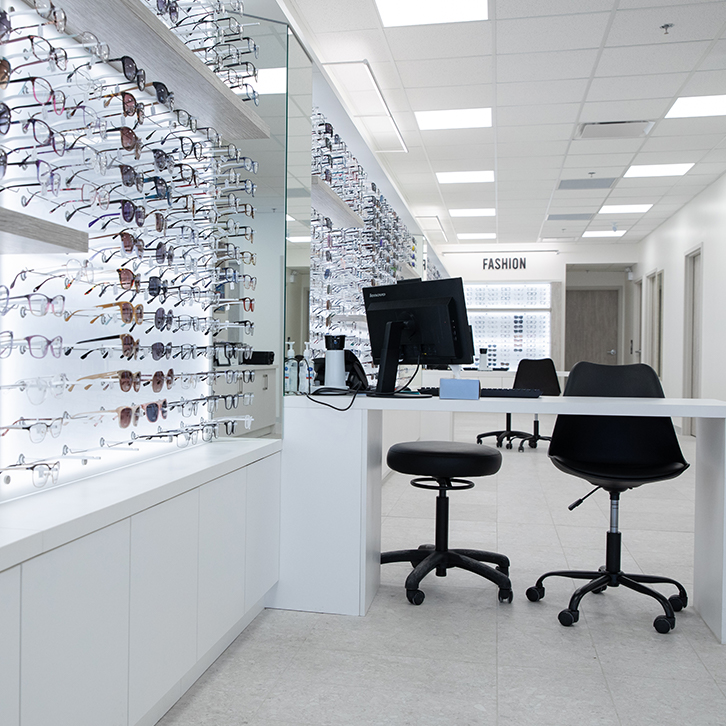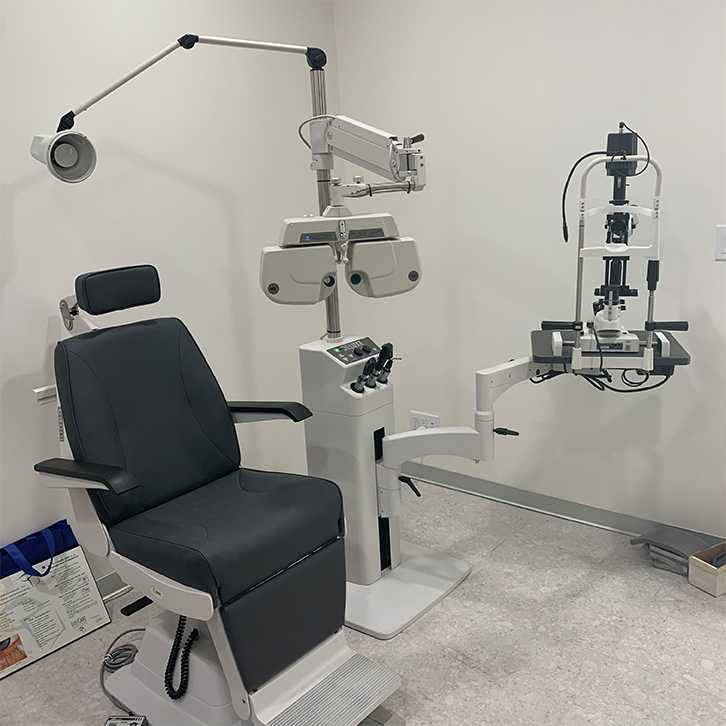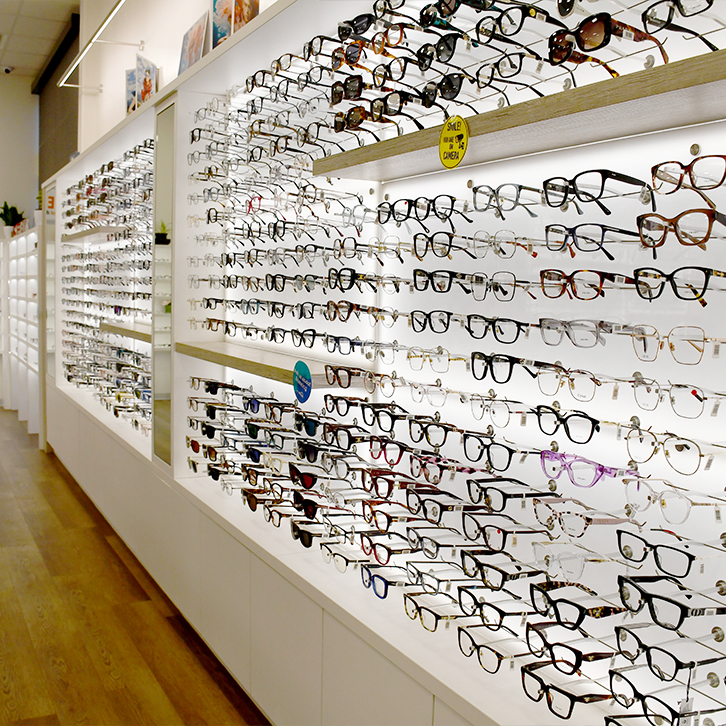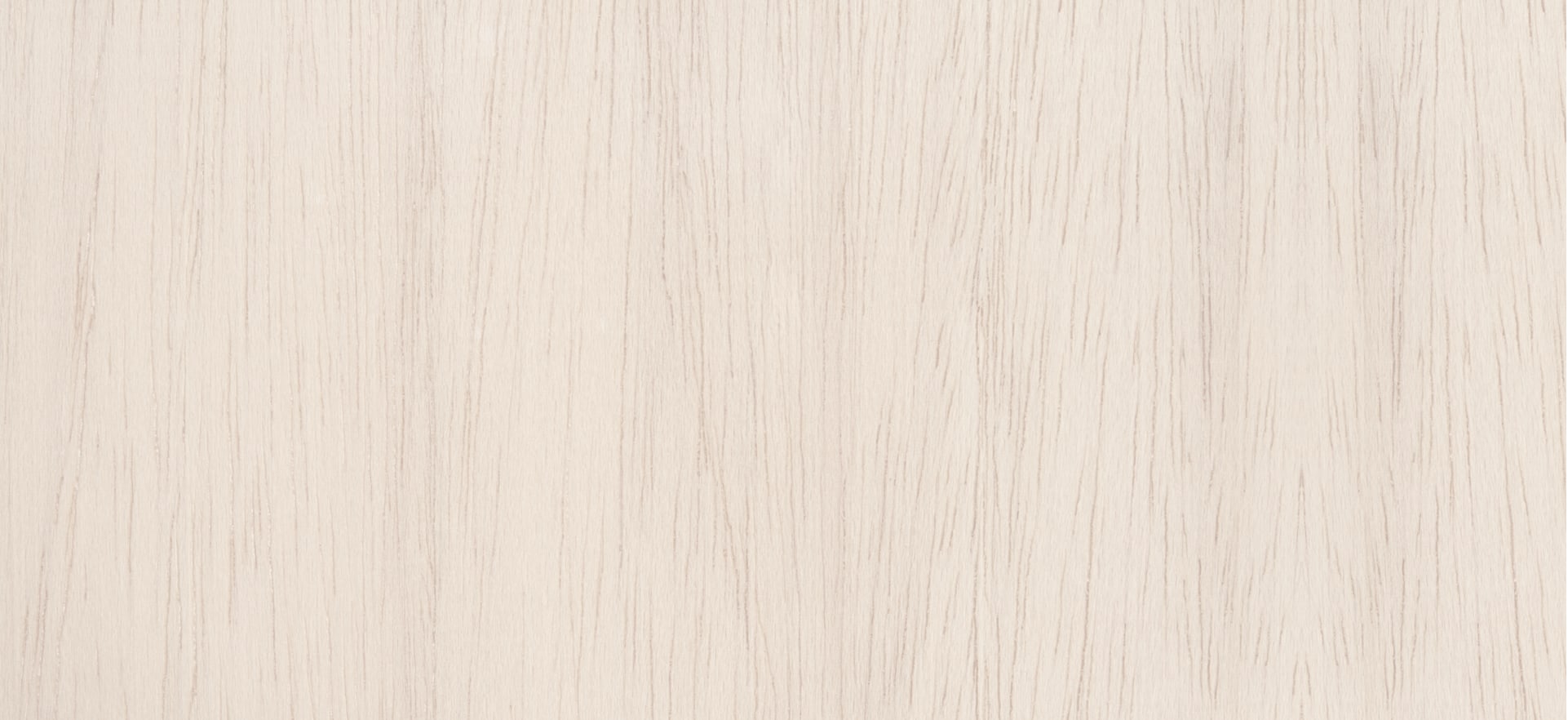Myopia is a common eye condition usually diagnosed during a comprehensive eye exam in childhood, and it tends to progressively worsen over time until stabilizing in early adulthood. When your child’s myopia progresses, your optometrist may recommend management strategies.
One form of myopia management is the prescribed use of atropine eye drops. You may have heard of this treatment before, but how does atropine work to control myopia? Before you speak with your optometrist, learn more about how myopia progression can be controlled with atropine.
What is Myopia?
Myopia, more commonly known as nearsightedness, is a condition in which near objects are seen clearly while distant objects do not focus properly, causing them to appear blurry. This condition is very common, affecting nearly 30% of Canadians.
Myopia occurs when an eyeball is too long or the cornea is too steeply curved. Entering light is focused in front of the retina instead of on the retina, causing distant objects to seem blurred. Along with blurry vision, adults with undiagnosed myopia may experience headaches or feel the need to squint to see.
This condition usually begins to develop in childhood and can progress until it stabilizes in adulthood. Some children may not even notice they have symptoms, which include:
- Unawareness of distant objects
- Excessive blinking
- Persistent squinting
- Frequent eye rubbing
- A need to sit closer to objects (television, classroom board)
Myopia tends to worsen as children age. This progression can lead to a reliance on heavy prescriptions, and severe cases of myopia increase the risk of developing eye conditions such as glaucoma, cataracts, and retinal detachment.
Several treatments are available to slow or potentially stop myopia progression. A common treatment to manage myopia is atropine eye drops.
What is Atropine?
Atropine eye drops are usually used to dilate your eyes during a comprehensive eye examination. This medication can be used to weaken the contractions of the muscles within the eye that operate the iris and lens.
The atropine used in an eye exam to dilate eyes is called ophthalmic atropine. For myopia control, a lower dose of this medication is used, called low-dose atropine.
Low-Dose Atropine
Low doses of atropine can be effective for treating myopia progression. When applied, the eye drops relax the eyes’ focusing mechanisms. There are various types of low-dose atropine eye drops, but the suggested dosage is usually 0.025% to 0.01% to minimize the risk of potential side effects. Your optometrist can suggest the most effective dosage for your child, but it is important to understand how this medication works.
Benefits of Atropine for Myopia
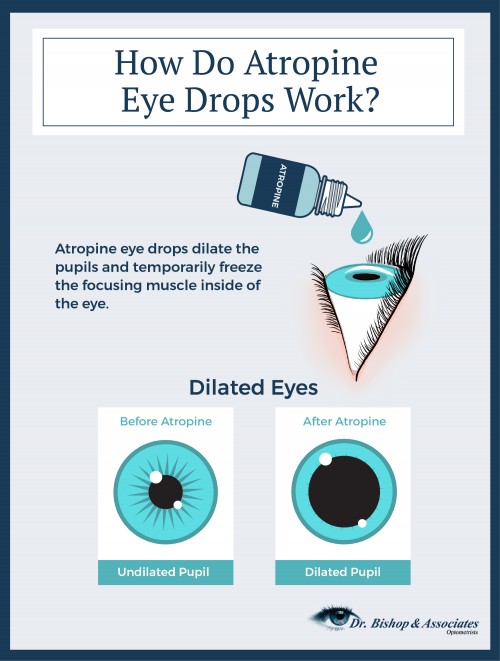
As mentioned above, atropine dilates the pupils and temporarily paralyzes the focusing muscle inside of your eye. When applied, atropine eye drops were found to significantly reduce myopia progression in children.
This is the goal of treatment methods for myopia; to reduce the progression of high myopia, as it can significantly increase the risk of several eye conditions.
Various doses of atropine can be administered, and your optometrist can recommend what is best for your child. Typical doses may include 0.5%, 0.25%, 0.1%, or 0.01%, depending on your child’s needs. 0.025% atropine eye drops are generally recommended because of their effectiveness and low risk of side effects.
In a recent study it was shown that 95% of children did not have any side effects with 0.025% atropine eye drops and that it had been more effective than 0.01% atropine eye drops. If you are uncertain about the use of atropine for your child, there are several other treatment options your optometrist may recommend.
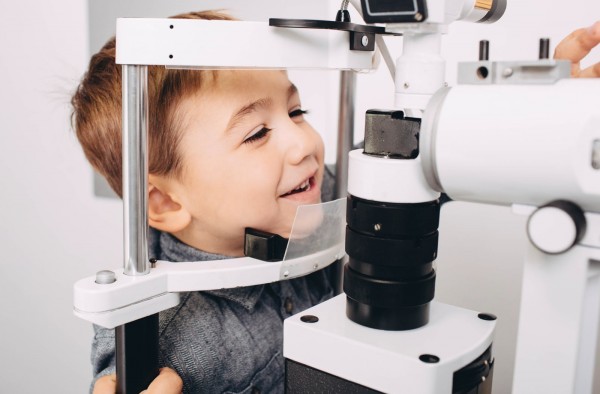
Alternative Myopia Control
Ortho-K
Ortho-K or orthokeratology uses a specialized kind of contact lens for overnight wear. These lenses gently reshape your child’s corneas while they sleep, and the ortho-k lenses can be taken out in the morning. Afterwards, they can enjoy clear vision for their day at all distances.
Multifocal Contact Lenses
Multifocal contact lenses have multiple prescriptions within one contact lens. They are separated into different areas of the lens, allowing your child to see clearly at all distances. These lenses can be effective for myopia control because they relieve the strain placed on the eyes when working on close-distance tasks.
Daily Disposable Soft Contact Lenses
Daily disposable soft contact lenses such as MiSight 1 Day can slow the progression of myopia. These lenses are disposable and easy to use for children who have never worn contact lenses before.
Spectacle Lens
MiyoSmart spectacles lenses are easy to fit single vision lenses that work with many frame choices. Through its ring shaped treatment area it slows down myopia progression by up to 60%. This is a great choice for children with an active life by offering impact resistant lenses and UV protection.
Slowing myopia progression is vital to preventing your child from relying on heavy prescriptions and having an increased risk of eye conditions in adulthood. Whatever form of treatment you are most interested in, your optometrists can recommend the best plan for your child going forward.
Protect Your Child’s Vision
Myopia is a common eye condition and symptoms generally develop in childhood. If left untreated, this condition can progress and become more severe in adulthood. If your child is experiencing symptoms of myopia, or simply needs their regular eye exam, book an appointment with your optometrist.

